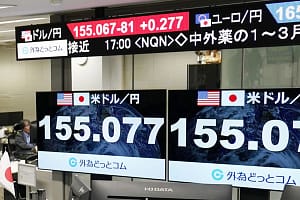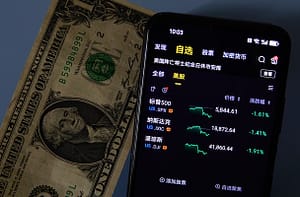Corporate bonds from the emerging markets (EM) universe have remained under the radar of many investors in 2023.
Demand was lower than expected, although the segment – hard currency bonds are particularly attractive – is in a better fundamental position than ever before.
The majority of EM companies maintain more solid balance sheets than their counterparts in western industrialised countries. The latter have taken advantage of the extremely loose financing conditions since the Covid pandemic to increase debt relative to EM companies.
The credit quality of EM companies has also improved accordingly, with an average investment grade (IG) rating of BBB+. The exclusion of Russian companies last year and many Chinese property companies during 2023 has also contributed to the improvement in the quality of the investment universe.
Investors currently receive a higher return of around one percentage point as compensation for the ‘risk’ of an investment in EM. Specifically, this is currently around 5.2 per cent in EUR hedged EM (compared to 4.2 per cent in the Euro IG universe).
Both markets currently have the same duration of 4.5. This is lower than that of the global IG bond market (5.8% duration), which is also a positive attribute in the current interest rate environment, where increased volatility is evident.
It is also interesting to note that many EM companies do not feel any pressure to refinance at higher interest rate levels due to their sound financial status. On the contrary: both in 2022 and this year, rather than taking on additional debt, bond buybacks have been observed.
The IG EM corporates segment is also more attractive for defensive investors than EM government bonds. This is because many of these countries do not have an IG rating, but are often found in the high-yield segment.
The selection of EM countries with an IG rating is currently limited to just 18, while investors can choose from around 430 issuers in the corporate universe and thus build up a broadly diversified portfolio.
It is to be expected that EM corporate bonds denominated in hard currencies will meet with increased investor interest in the coming year after a dry spell. In general, we see enormously fluctuating fund flows here, which are significantly more pronounced than in the developed markets.
We assume that the diversification benefits offered by the large number of EM countries per se will be increasingly recognised in portfolios.
While the current global economic and (geo)political developments are priced into equities, further geopolitical risks or a worse-than-expected US economic slowdown could potentially trigger further market disruption. The US presidential election next year could also lead to uncertainty. However, in our view, the aforementioned positive features outweigh the potential risks.
Active management of an EM bond portfolio makes sense in order to optimally utilise inefficiencies in this heterogeneous universe, and to be able to react flexibly to developments. India, with its growth trajectory, is one of our favoured regions heading into the new year.
For example, we consider the telecommunications, commodities and green energy sectors to be attractive. In general, Asia and the Middle East are less volatile than most South American countries due to their better ratings, despite the current unrest relating to Israel.
Due to the current high risk-free returns, it is generally advisable to focus on better credit quality. This can be found in a broad regional spread in the emerging markets. We favour bonds from South Korea, Mexico, Indonesia and India, for example. We are currently cautious in China, Hong Kong and Brazil.







Leave a Comment